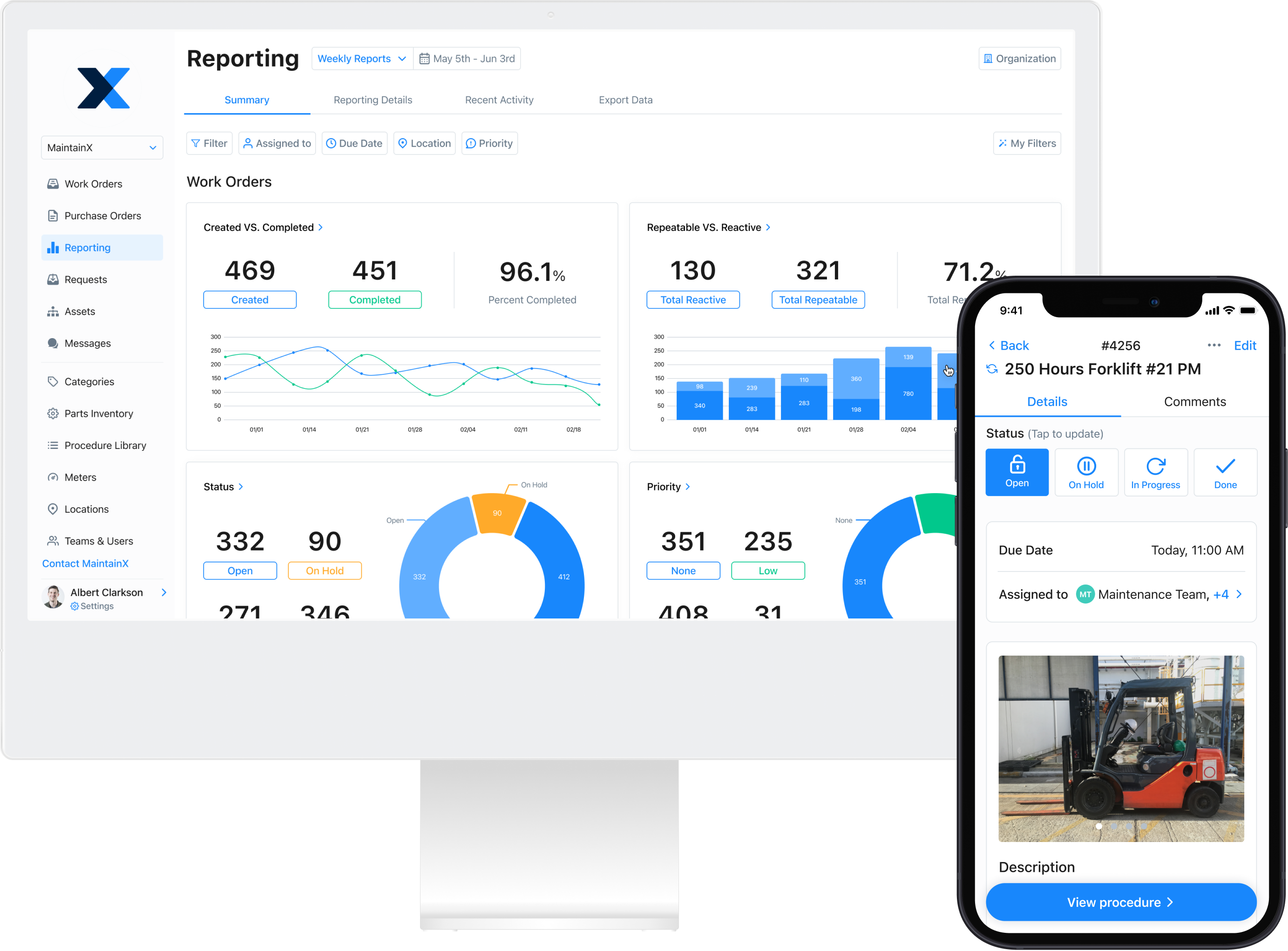
Lean manufacturing has become widely used across industries. Implementing lean concepts can help organizations streamline their production processes, eliminate waste, and constantly improve customer experiences.
If you’re looking to learn more about lean manufacturing and how to integrate core lean principles into your company, reading lean bestsellers is a great way to start.
We’ve curated a dozen of the best lean manufacturing books. We hope that reading one or more of these books will provide you with a solid grounding in the principles, processes, and mindset required to turn your business lean.
In addition, we’ve linked each title to Amazon. This way, you can easily add these 12 must-read management books to your cart. By the way, they are listed in no specific order. They are all great!
12 of the Best Lean Manufacturing Books
1. The Toyota Way: 14 Management Principles from the World’s Greatest Manufacturer
—Jeffrey Liker
This book is considered the bible of lean manufacturing. The author provides a comprehensive overview of the Toyota Production System and the 14 philosophies that drive it.
Furthermore, Liker shares numerous examples and case studies of how Toyota has successfully implemented lean principles. He offers practical advice on applying these principles in any organization.
Plus, the book explains why Toyota is still at the forefront of lean innovations, continuing its reign as a global leader in lean manufacturing.
2. Lean Thinking: Banish Waste and Create Wealth in Your Corporation
—James P. Womack and Daniel Jones
In this book, Womack and Jones expand on lean thinking introduced in their first book, The Machine That Changed the World. In this case, the new book delves deeper into the practical application of lean concepts. The authors explain how to improve efficiency, quality, and customer satisfaction with step-by-step guides for each methodology.
From mapping the value stream in your supply chain to eliminating muda and other wastes, Jones and Womack have written manufacturers the manual on lean implementation.
3. Lean Production Simplified
—Pascal Dennis
This book is a practical and concise guide to implementing lean manufacturing in any organization. Accordingly, Dennis explains the fundamental principles of lean, including visual management, Total Productive Maintenance, just-in-time delivery of parts, and the jidoka principle.
Dennis previously won the Shingo Prize for his extensive work on lean management. Furthermore, this follow-up book is just as good. It offers relatable and easy-to-understand illustrations to help readers grasp the fundamentals of lean.

4. The Lean Six Sigma Pocket Toolbook
—Michael L. George, John Maxey, David Rowlands, and Mark Price
This book is a compact guide to the tools and techniques of lean Six Sigma, such as ‘Pull,” “Heijunka,” and “Control Charts.” Subsequently, the authors include analyses of over 100 tools and methodologies, grouping them by purpose and use case.
The authors wrote the book to help readers understand and apply lean Six Sigma in their own organizations. In addition, this handbook is beneficial for Green and Black Belts looking to transition from manufacturing or maintenance technician to management.
5. The Machine That Changed the World
—James P. Womack, Daniel T. Jones, and Daniel Roos
First published in 1990, this book is a classic study of the rise of lean manufacturing. Indeed. the book is the first to share a detailed analysis of the Toyota Production System (TPS) and its impact on the automotive industry.
In this case, the authors provide a comprehensive description of the entire lean system. In fact, they compare lean Toyota to the old-school approach of General Motors (GM) as a real-life example.
6. Learning to See: Value Stream Mapping to Add Value and Eliminate Muda
—Mike Rother and John Shook
In Learning to See, Mike Rother and John Shook provide a practical guide to value stream mapping, a crucial part of your lean journey. Here, they present an easy-to-follow instruction manual with step-by-step instructions. In addition, they explore creating and using value stream maps to visualize and improve workflows and production processes. And, of course, eliminate the eight wastes.

7. Toyota Kata: Managing People for Improvement, Adaptiveness, and Superior Results
—Mike Rother
In this guide, Rother delves into the fundamentals of operational excellence: developing a lean culture and activating underutilized talent. Furthermore, the author draws on six years of research into Toyota’s employee management processes. As a result, Rother examines the company’s organizational routines and shares practical approaches that help instill lean manufacturing values across your workforce.
8. Kaizen Express: Fundamentals for Your Lean Journey
—Toshiko Narusawa and John Shook
In Kaizen Express, the authors share their extensive experience working within the original lean management system, the Toyota Production System (TPS).
Shook was the first American manager at Toyota in Japan. Later, he became the GM of administration and planning at Toyota’s North American engineering, research, and development center. Consequently, he wrote this book to teach the essentials of TPS to Japanese and non-Japanese readers working together at Japanese factories worldwide.
Uniquely laid out with Japanese and English language on facing pages, the book is an excellent reference for cross-cultural teams looking to implement a lean production system.

9. 2 Second Lean
—Paul Akers
In 2 Second Lean, author Paul Akers shares his approach to transforming the culture of his company, FastCap, through implementing minor, incremental improvements. Moreover, Akers writes that even the smallest changes, if made consistently, can significantly impact your workplace and company culture.
As a result, Akers shares his journey from his first discovering lean through to successfully implementing a culture of continuous improvement at FastCap. An excellent book for beginners, 2 Second Lean breaks concepts into easy-to-follow lessons to apply in your organization.
10. Gemba Kaizen
—Masaaki Imai
In his book, Gemba Kaizen, Masaaki Imai, founder of the Kaizen Institute, explores the concept of the gemba, or “the real place.” He explains how it can be used to implement cost-effective, incremental improvements in business processes.
The book covers fundamental concepts of gemba kaizen, such as workplace organization, waste elimination, visual management, kanban, and the role of management in the lean workplace. Imai also includes case studies from various industries to illustrate the practical applications of these concepts.
11. The Lean Mindset: Ask the Right Questions
—Mary Poppendieck and Tom Poppendieck
In this book, the Poppendiecks introduce the concept of the lean mindset–constantly seeking ways to improve and innovate. Then, they provide practical advice on developing a lean mindset and creating the kind of efficiency that attracts customers and leverages the talents of switched-on staff.
An excellent book for leaders, The Lean Mindset, will help you communicate complex initiatives like improving quality across your organization to your team.
12. Toyota Production System: Beyond Large-Scale Production
—Taiichi Ohno
Written by Taiichi Ohno, who many consider the father of the Toyota Production System, this book covers the critical concepts of waste and just-in-time (JIT) thinking. Ohno explains how lean principles can improve any production effort, particularly those focused on eliminating waste.
A bestseller for almost three decades, Ohno’s book is a primer on the history of lean. He writes with a great appreciation for how long it took to develop the concepts that manufacturers now use every day.

Get Keen on Lean: MaintainX Tracks Your Lean Improvements
Looking for a quick overview of the core ideas? Learn about all kinds of lean manufacturing and maintenance concepts in the MaintainX Learning Center!
FAQs

Caroline Eisner is a writer and editor with experience across the profit and nonprofit sectors, government, education, and financial organizations. She has held leadership positions in K16 institutions and has led large-scale digital projects, interactive websites, and a business writing consultancy.





.jpeg)
.jpeg)






.jpeg)

.jpeg)




